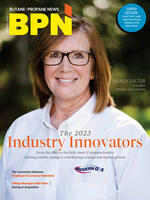
In a workforce rife with “quiet quitting,” the antidote could be “quiet returns” — a sign of an engaged culture. When disengaged employees show up at work, they undermine possibility and business potential. These are the people who quit quietly and stay, secretly protesting burnout, stress or other abuses of work-life balance. Add to that major concerns about job security and worker safety for employees in the oil and gas industry. Don’t ignore the desires and needs of these frustrated workers. Give them a better experience.
In one way or another, we are all returning to new forms of work. Change is a way of life. In the energy industry, change is in large part driven by new perceptions about fossil fuels and increased awareness of climate change. Many younger workers prefer to find a career in the renewable energy sector and others find their skills transfer to industries like manufacturing or construction. Despite the generous pay, few employees become truly engaged. It’s up to leaders to develop environments newly focused on well-being.
When people feel valued and cared for by their employer, they’ll quietly return to their jobs, fully engaged in creating success. Easily said, but it takes deep thought and well-crafted strategies to meet today’s worker expectations. According to a 2022 Gallup Global Workplace Report, “The relationship between well-being and engagement is vital because how people experience work influences their lives outside work, and overall well-being influences life at work.” This broad view of work and life has always been true, but somehow businesses are just waking up to it, including those in energy.
According to a recent McKinsey Report, in the oil and gas industry, innovative talent attraction and retention includes things like “split-testing employee value propositions (such as attracting tech talent by emphasizing the company’s role in the new energy environment), building pipelines from nontraditional sources (like insurance industries), partnering with the business to scenario-test strategic workforce plans, and redesigning career paths to provide technical experts with the chance of promotion outside of management.” We should be looking to innovative technologies and beyond them to evaluate how processes, decision-making, human-centered management and new opportunities can help attract talent and retain current employees.
People today demand to be seen as the whole person they are and bring their full, authentic selves to work. This means you, as a leader, must hone your soft skills and find new flexibility. You’ll need to trust employees to be productive from wherever they want to work and be willing to rehire people you said would never be reconsidered. Lack of trust and inflexibility are what lead to disengagement and its consequences. Practicing them helps win top talent.
Ensure that people of all levels look forward to a quiet return to work by minimizing the stressors and creating a humane and safe environment that welcomes them in. Start with two priorities: allowing remote/hybrid work options wherever possible and reconsidering your hiring practices.
Allow Remote/Hybrid Options
“Working from home is a future-looking technology,” Stanford economics professor and researcher Nicholas Bloom stated in a TED Talk five years ago. He was right! Bloom’s recent two-year study of 500 employees found that remote workers were 50% less likely to leave the company and achieved a 24% productivity boost as well.
We’re still analyzing the short- versus long-term productivity statistics filtering in on remote and hybrid work and debating the pros and cons depending on business models. However, LinkedIn cites research showing that 97% of remote workers would like to continue working remotely, at least some of the time, for the rest of their careers. And Ladders research projected that 25% of professionals in North America would, indeed, be working remotely by the end of 2022.
All of this, coupled with the fact that Americans working from home save an estimated 60 million commuting hours a day, means remote is here to stay — and I don’t believe employers can easily take back those hours.
Employees spend the new-found time sleeping an extra hour in the mornings, making time for family or doing activities like working out, says new research by the Federal Reserve Bank of New York. This means companies have happier, healthier workers, which incorporates several benefits they may not yet recognize.
Given that more flexibility is a top priority for workers today, it’s hard to understand why more employers aren’t creatively looking at remote options to see how they can make them fit. If work models prevent them, as they so often do with businesses in the energy industry, companies can advance the well-being of their people by offering other flexible options, like four-day weeks and shared jobs. When you dare to care, creativity follows.
Who Are You Not Hiring?
Boomerangs
Traditionally, if an employee quit for personal reasons of almost any kind, they would never be considered for rehire. They were labeled unreliable or disloyal. Reality has shown that these rehired “boomerangs” often become your most valuable employees. They know your culture and are a fit, so they need less training. And even if they worked for a competitor for a while, they bring new skills and innovation back with them.
Mothers & Other Caretakers
With the understanding that it’s not just women who are caretakers, the 2022 Gallup Global Workplace Report states specifically that women in the United States and Canada were among the most stressed employees globally. As we return to various forms of work, employers would do well to find solutions to things keeping millions of women at home.
Eliminate stressors like the cost and limited availability of childcare with on-site daycare, at-home services or more flexible time off policies. Provide pleasant, private rooms to nurse. Ask women and others with family responsibilities what you can do, specifically, to increase their well-being.
Older Workers
Don’t let bias influence your perceptions of older employees. They offer knowledge and experience that can only be gained over time and a different perspective that adds diversity to your decisions. They can be excellent mentors.
Workers Without the Right Skills
Don’t overlook upskilling current employees with the ability and interest to move into a new role. When evaluating candidates, hire for cultural fit first, knowing you can teach necessary skills, but you cannot change attitude. It’s expected that oil and gas companies will continue to have talent shortages over the long haul. The industry earned record profits last year, which means there is enough cash flow, along with compelling reasons, to fund new talent strategies in 2023. Today, well-being and engagement combine to make a powerful force for recruitment. When you lead with them, it follows that your people will be highly productive and your business will thrive.
No more quiet quitting — only quiet returns to a workplace where people choose to stay.


